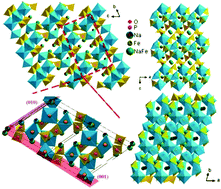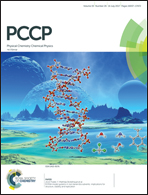Electrospun graphene-wrapped Na6.24Fe4.88(P2O7)4 nanofibers as a high-performance cathode for sodium-ion batteries†
Abstract
Na6.24Fe4.88(P2O7)4 is one of the intensively investigated polyanionic compounds and has shown high rate discharge capacity, but its relatively low electronic conductivity hampers the high performance of the batteries. Herein for the first time we report new graphene wrapped Na6.24Fe4.88(P2O7)4 composite nanofibers (NFPO@C@rGO) made from electrospinning for cathodes of SIBs to achieve an even higher performance with a highly stable discharge capacity of ∼99 mA h g−1 at a current density of 40 mA g−1 after 320 cycles, which is 1.6 times higher than that of the pristine Na6.24Fe4.88(P2O7)4 (NFPO@C) composite. In particular, the NFPO@C@rGO composite cathode exhibits an even higher discharge rate capacity of ∼53.9 mA h g−1 at a current density of 1280 mA g−1 (11C) than that of ∼40 mA h g−1 at a current density of 1100 mA g−1 (9.4C) for the reported best high discharge rate performance of NFPO. The superior cycling and high rate capability are attributed to the unique spinning vein fiber based porous structure offering a good intimate contact between NFPO@C and graphene for great electronic conductivity, fast ionic transport, a large reaction surface and a strong solid structure preventing collapse during cycling, thus achieving a high rate discharge performance and high cycling stability.



 Please wait while we load your content...
Please wait while we load your content...